HOME
What Is the Difference Between Traditional AI and Generative AI?

Introduction – Traditional AI and Generative AI?
Artificial Intelligence (AI) is a powerful technology that’s changing the way we live, work, and think… But not all AI is the same… Two main types are gaining attention: Traditional AI and Generative AI… While both are part of the AI family, they serve very different purposes…
In this article on MeriKahani.online, we explain how these two types of AI differ, with simple examples and real-world uses…
🔹 What Is Traditional AI?
Traditional AI, also called narrow AI, is designed to perform specific tasks based on predefined rules or data… It doesn’t create new content—it follows logic…
🛠️ Examples of Traditional AI:
- Google Maps (route optimization)
- Spam filters in Gmail
- Face recognition in smartphones
- Credit card fraud detection
✅ Key Features:
- Task-specific
- Rule-based or pattern-based
- Doesn’t learn beyond its training unless updated manually
🔹 What Is Generative AI?
Generative AI creates new content—text, images, audio, and even video—based on what it has learned… It’s powered by advanced machine learning models like GPT (for text) or DALL·E (for images)…
🖼️ Examples of Generative AI:
- ChatGPT (writes text, answers questions)
- Midjourney or DALL·E (generates images)
- MusicLM (generates songs)
- Sora by OpenAI (generates video content)
✅ Key Features:
- Can create new content
- Learns patterns from huge datasets
- Uses deep learning (especially transformer models)
🔄 Key Differences Between Traditional AI and Generative AI
| Feature | Traditional AI | Generative AI |
| Purpose | Task execution | Content creation |
| Learning style | Rule-based or pattern-based | Deep learning & transformers |
| Output | Predictive or logical | Creative or generative |
| Examples | Siri, fraud detection | ChatGPT, DALL·E |
🧪 Real-World Comparison – Traditional AI and Generative AI?
| Scenario | Traditional AI | Generative AI |
| Chatbots | Follows scripts | Creates human-like replies |
| Image use | Recognizes faces | Creates new images from text |
| Medical use | Diagnoses from symptoms | Suggests new drug compounds |
📈 Why This Matters in 2025
In 2025, Generative AI is everywhere—from marketing content to education tools… Understanding the difference between these two types of AI helps businesses, developers, and individuals choose the right tool for their goals…
🔗 Internal Linking Suggestions:
- What is Artificial Intelligence? – Complete Guide
- Top 5 Industries Using AI in 2025
- Is AI Dangerous? Pros and Cons
📌 Conclusion Traditional AI and Generative AI?
Traditional AI is like a smart calculator—accurate but limited… Generative AI is more like an artist—it creates, learns, and adapts… Knowing the difference helps you better understand where AI is heading and how to use it wisely…
How AI Is Changing Daily Life in 2025
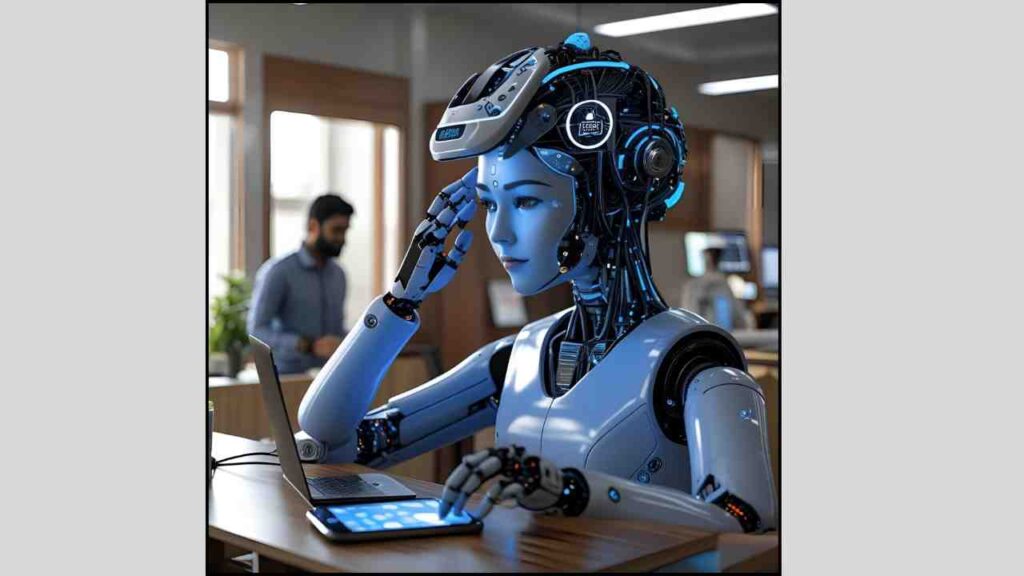
Introduction
Artificial Intelligence (AI) is no longer a futuristic idea—it’s part of our everyday life in 2025… Whether you’re using a smartphone, shopping online, visiting a hospital, or attending school, AI is working behind the scenes to make things faster, easier, and more personalized…
In this article on MeriKahani…online, we explore how AI is transforming day-to-day life in India and around the world…
🧠 1… AI in Smartphones
Your smartphone is smarter than ever in 2025… AI helps with:
- Voice assistants like Google Assistant or Siri understanding Hindi & regional accents
- Camera optimization using AI for better photos
- Spam call detection and automatic blocking
- Real-time language translation
📱 Example: Many Indians now use apps that translate regional languages instantly during calls or chats…
🛒 2… AI in Shopping
AI is transforming eCommerce and offline retail with:
- Personalized product recommendations
- AI-based virtual try-ons for clothes or makeup
- Price comparison bots that find the best deal automatically
🛍️ Example: Flipkart and Amazon use AI to suggest products based on past behavior, even in local languages…
🏥 3… AI in Healthcare
In 2025, AI is helping doctors and patients by:
- Diagnosing diseases from X-rays and scans
- Offering instant health tips through chatbots
- Scheduling appointments intelligently
- Monitoring chronic diseases like diabetes using wearables
💡 Example: AI apps in India now help predict dengue or flu outbreaks in real time based on regional data…
🧾 4… AI in Banking & Finance
AI makes finance more secure and user-friendly:
- Detects fraud in real-time
- Offers auto-budgeting and expense tracking
- Approves instant loans based on AI credit scoring
💰 Example: Paytm and PhonePe use AI to block suspicious payments and provide better loan offers…
🎓 5… AI in Education
AI is making learning personal and powerful:
- Adaptive learning platforms like BYJU’S or Khan Academy
- AI teachers that answer doubts in local languages
- Homework helpers like ChatGPT are becoming common
🎒 Example: Village schools in India now use AI tutors on tablets to teach math and science…
💼 6… AI in Jobs and Workplaces
Offices are more efficient in 2025:
- AI handles emails, summaries, and meeting notes
- Virtual assistants book appointments and manage calendars
- AI tools help in hiring, performance tracking, and training
🖥️ Example: Many Indian startups use AI tools like Notion AI and ChatGPT for daily productivity…
🌏 Real-World Impact in India
India is one of the fastest-growing AI markets… From agriculture to healthcare, AI is helping:
- Farmers get weather updates and crop advice
- Students in rural areas access world-class content
- Small shops use AI billing and inventory software
📊 Quick Summary Table
| Sector | How AI Helps in 2025 |
| Smartphones | Voice, camera, spam detection |
| Shopping | Smart recommendations, try-ons |
| Healthcare | Diagnosis, health alerts, chatbot doctors |
| Finance | Fraud detection, budgeting, instant loans |
| Education | Adaptive learning, AI tutors |
| Workplaces | Automation, scheduling, writing assistants |
🔗 Internal Linking Suggestions:
- AI in Indian Education: Bright Future Ahead
- Top AI Tools for Small Businesses in India
- Benefits and Risks of AI in Daily Life
📌 Conclusion
AI is now a silent partner in our lives—guiding, predicting, and improving how we live, shop, learn, and work… In 2025, it’s not just a tool for tech experts but a companion for everyone—from city professionals to rural farmers…
Stay updated with MeriKahani…online for more real-life tech stories that matter to you…
Top 5 Industries Revolutionized by AI in 2025

Introduction
In 2025, Artificial Intelligence is not just a tech trend—it’s a business revolution… Across India and the world, AI is reshaping how industries work, serve customers, and grow… From faster medical diagnoses to smarter farming, AI is driving better decisions and real results…
In this article on MeriKahani…online, we explore the top 5 industries that have been completely transformed by AI in 2025…
🏥 1… Healthcare Industry
AI is saving lives by improving speed, accuracy, and affordability…
Key AI Applications:
- Early detection of diseases (cancer, heart problems, diabetes)
- Robotic surgeries with AI-assisted precision
- Medical chatbots for 24/7 health support
- Drug discovery using AI simulations
🩺 Example: In India, AI-based diagnostic tools like Qure…ai help detect diseases in X-rays and CT scans faster than human doctors…
🛒 2… Retail & E-Commerce
From personalized shopping to virtual assistants, AI is changing how we shop…
Key AI Applications:
- Predictive product recommendations
- Smart inventory management
- Chatbots for instant customer support
- Visual search and virtual try-ons
🛍️ Example: Myntra uses AI to suggest clothing based on user taste and browsing behavior… Amazon uses AI for smart warehouse automation…
🎓 3… Education
AI is revolutionizing how students learn and teachers teach…
Key AI Applications:
- Personalized learning paths for every student
- Instant doubt-solving through AI tutors
- AI-based assessments and performance tracking
- Language translation for multilingual learning
🎒 Example: BYJU’S uses AI to adapt lessons based on student responses… In rural India, AI apps are used to teach children via voice-based guidance…
🚜 4… Agriculture
AI is empowering Indian farmers with data, insights, and smart tools…
Key AI Applications:
- Crop health monitoring via drones
- AI weather forecasting for better planning
- Soil testing and fertilizer recommendations
- Market price prediction and yield estimation
🌾 Example: Startups like CropIn and DeHaat offer AI-powered mobile apps that help farmers boost production and reduce waste…
💼 5… Finance & Banking
AI is making financial services smarter, faster, and more secure…
Key AI Applications:
- Fraud detection and risk analysis
- AI chatbots for customer support (like YONO SBI)
- Loan approval automation
- Personalized financial planning
💰 Example: Indian banks like HDFC and ICICI use AI to detect fraudulent transactions in real-time and guide customers on investments…
📊 Quick Comparison Table
| Industry | Key AI Impact in 2025 |
| Healthcare | Faster diagnoses, robotic surgeries, chatbots |
| Retail | Smart recommendations, automation, virtual try-ons |
| Education | Personalized learning, AI tutors, assessments |
| Agriculture | Crop monitoring, weather prediction, smart tools |
| Finance | Fraud detection, chatbot banking, smart loans |
🔗 Internal Linking Suggestions:
- AI in Indian Healthcare: Life-Saving Tech
- How Farmers in India Use AI for Better Crops
- Future of AI in Indian Schools and Colleges
📌 Conclusion
These five industries show how powerful AI can be when applied correctly… It’s not just making businesses more efficient—it’s improving health, learning, farming, finance, and shopping for everyone, especially in growing countries like India…
Stay tuned with MeriKahani…online for more real-life tech transformations…
Why We Need Global Laws for Artificial Intelligence
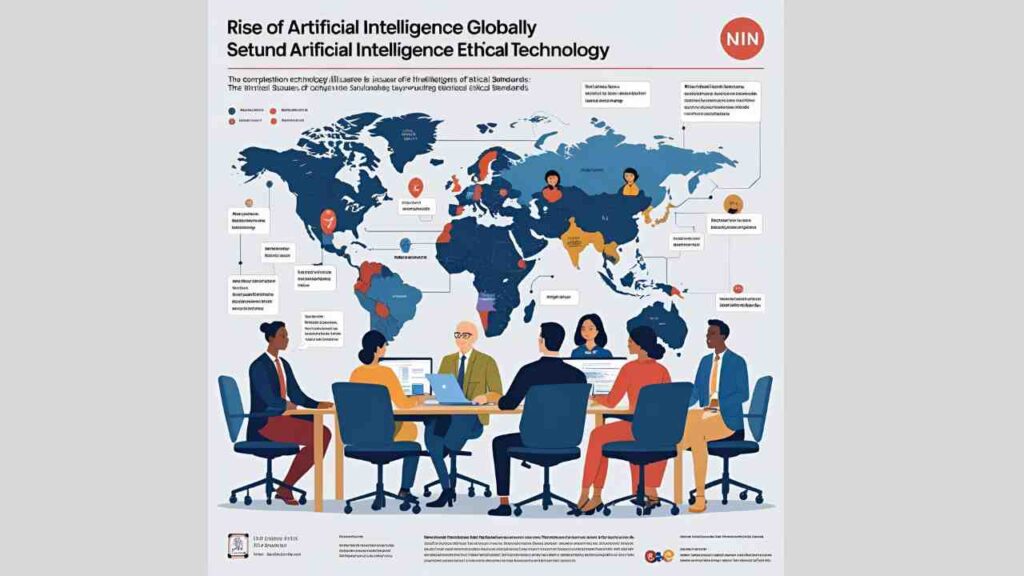
Introduction
Artificial Intelligence (AI) is developing faster than ever in 2025… It’s creating opportunities—but also new risks… From deepfakes and job loss to AI warfare and privacy breaches, the lack of proper rules is becoming a global problem…
This article on MeriKahani…online explains why we need global laws to regulate AI, how it impacts people, and what India’s role can be…
🌍 The Global Nature of AI
AI is not limited to one country—it is developed in the U…S…, used in India, and hosted on servers in Europe… A single AI app can influence millions across borders…
Why It’s a Problem:
- No international agreement means unequal rules…
- Some countries use AI ethically, others use it for surveillance or war…
- AI misinformation spreads globally (deepfakes, election interference)…
🔗 Example: A fake video made using generative AI in one country can go viral and affect politics in another country…
🛑 The Dangers of Unregulated AI
- Privacy Violations
AI can track and analyze people without consent—through CCTV, phones, or even social media… - Fake Content & Deepfakes
Generative AI creates ultra-realistic fake videos, voices, and news… - Job Displacement
Without legal planning, AI may replace jobs in bulk without reskilling workers… - AI Weapons & Military Use
Autonomous drones or AI-based warfare is a serious global threat… - Bias and Discrimination
AI trained on biased data can make unfair decisions—like denying loans or jobs…
⚖️ Why We Need Global AI Laws
Just like we have global laws for nuclear weapons or climate change, we now need global rules for AI…
Key Reasons:
- Safety: Prevent use of AI in war or terrorism
- Fairness: Ensure AI treats people equally
- Privacy: Protect human rights
- Accountability: Hold developers and companies responsible
- Transparency: Make sure people know when they’re interacting with AI
🌐 Who Should Create These Laws?
- United Nations (UN)
Can create global AI treaties and ethics guidelines… - G20 and BRICS Nations
India, China, USA, and others can collaborate on rules… - Tech Companies + Governments
Should work together to balance innovation and safety…
🇮🇳 India’s Role in Global AI Policy
India is emerging as a global AI hub… With its huge population and fast-growing tech ecosystem, India must:
- Lead conversations about ethical AI
- Promote AI for social good (healthcare, farming, education)
- Protect citizens from AI misuse through national AI policies
🗳️ Example: The Indian government is drafting a National AI Policy to regulate ethical and safe AI deployment…
✅ What Should Global AI Laws Cover?
| Area | Law Suggestion |
| Data Privacy | Limit how AI collects and uses data |
| Deepfake Regulation | Watermark or ban fake content |
| Algorithm Transparency | Companies must disclose how AI makes decisions |
| Employment Protection | Retraining policies for workers displaced by AI |
| Military AI Use | Global ban on autonomous killer robots |
🔗 Internal Linking Suggestions:
- AI and Ethics: How to Make Machines Fair
- Is AI a Threat or Opportunity? Explained Simply
- AI and Jobs in India: What the Future Looks Like
📌 Conclusion
AI is powerful—but without global rules, it can become dangerous… To make AI work for people, not against them, we need unified laws that balance innovation with responsibility… India has a strong voice in this future—and the time to act is now…
Stay informed on MeriKahani…online—your trusted guide to AI and technology in the real world…
How to Make AI Systems Fair and Unbiased
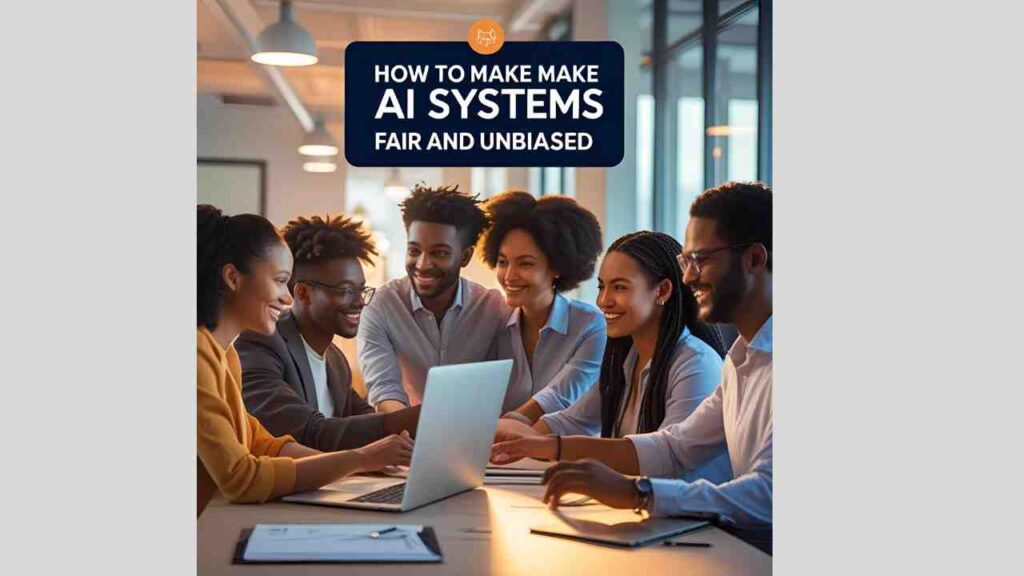
Introduction
Artificial Intelligence (AI) is becoming a part of daily life—from job applications to medical decisions… But what if AI is unfair? What if it shows bias based on race, gender, or economic background?
In this article on MeriKahani…online, we explain how bias happens in AI, why it’s dangerous, and what steps the world—including India—can take to make AI fair and ethical…
⚠️ What Is AI Bias?
AI bias occurs when a machine learning system produces unfair or unequal results… This happens because AI learns from human data, which can contain social and historical biases…
Real-World Examples:
- An AI hiring system prefers male names over female ones
- A facial recognition app performs poorly on darker skin tones
- A loan algorithm denies credit to people from lower-income areas
🧠 Remember: AI is not “intelligent” like a human—it reflects the data it’s trained on…
🤖 How Does Bias Enter AI Systems?
- Biased Training Data
If historical data is unfair, AI will learn and repeat that pattern… - Lack of Diversity
If developers don’t include diverse perspectives, blind spots appear… - Incorrect Labels
Human-labeled data may carry stereotypes or errors… - Unclear Objectives
If the AI goal isn’t defined properly, it may favor some groups unfairly…
🧪 Real Impact of AI Bias
| Sector | Bias Example |
| Healthcare | AI misdiagnoses diseases in women or minorities |
| Finance | Loan approvals favor one class over another |
| Education | Smart tests rank students unfairly |
| Employment | Resume filters reject qualified candidates |
✅ How to Make AI Fair and Unbiased
- Use Diverse Datasets
Include data from different races, genders, regions, and languages… - Bias Audits & Testing
Regularly test AI systems for bias before and after launch… - Transparent Algorithms
Make AI decision logic explainable to users and regulators… - Human Oversight
Let AI assist, but not make final decisions in sensitive areas like healthcare or hiring… - Open Feedback Loops
Allow users to report unfair or wrong decisions to improve the system…
🧩 India’s Role in Ethical AI
India is one of the largest AI user bases and must:
- Promote fairness in regional and local AI tools
- Support startups building inclusive AI for all income levels
- Build public datasets in multiple Indian languages and demographics
🇮🇳 Example: Indian ed-tech and banking apps must ensure their AI tools treat rural and urban users equally…
🧘 Ethics + Innovation = Responsible AI
AI must be:
- Fair: Treats everyone equally
- Accountable: Developers can explain decisions
- Inclusive: Works well across regions, languages, and backgrounds
🧠 Key Concept: Just because an AI system “works” doesn’t mean it’s “right…”
🔗 Internal Linking Suggestions:
- Global Laws for AI: Why They’re Needed
- Will AI Take Your Job? What to Know
- AI in India: Growth with Responsibility
📌 Conclusion
Fair AI is not just a technical problem—it’s a human rights issue… In 2025, we must design AI systems that respect equality, justice, and diversity… Only then can AI truly help everyone, everywhere…
Keep reading MeriKahani…online for honest insights into the AI shaping your future…
Will AI Take Away Jobs or Create New Ones?
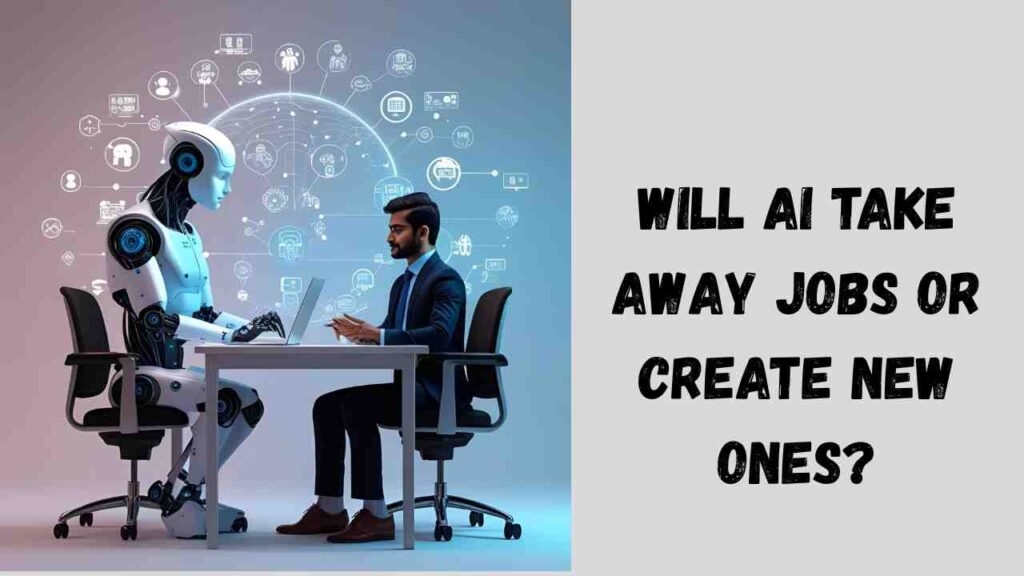
Introduction
“Will AI take my job?”
This is one of the biggest questions in 2025—and it’s a valid concern…
Artificial Intelligence is changing how we work, but it’s not just replacing jobs—it’s also creating entirely new ones… In this article on MeriKahani…online, we explore how AI is transforming careers in India and worldwide, which sectors are affected, and how you can prepare for the future…
🛠️ Jobs AI Is Replacing in 2025
AI excels in tasks that are:
- Repetitive
- Data-heavy
- Rule-based
Examples of Jobs at Risk:
- Data entry operators
- Tele-calling and customer service agents
- Basic accounting roles
- Assembly line workers in manufacturing
- Drivers (due to self-driving technology)
💡 Example: Many BPO companies in India now use AI chatbots to handle basic customer queries, reducing the need for human agents…
📈 Jobs AI Is Creating
As AI removes some roles, it also creates demand for new types of jobs…
High-Demand AI-Related Jobs:
- AI & Machine Learning Engineers
- Data Analysts & Data Scientists
- Cybersecurity Experts
- AI Trainers (for training AI with data)
- Prompt Engineers (writing inputs for generative AI)
- AI Ethics Officers & Compliance Analysts
🧠 Bonus: Even traditional careers like law, marketing, and design now require AI tools…
🌱 AI Helping, Not Replacing
AI is also acting as a support tool, making workers more productive instead of replacing them…
Examples:
- Teachers use AI to personalize lessons…
- Doctors use AI for faster diagnoses…
- Writers use AI for content ideas and editing…
- Farmers use AI weather prediction to improve crop yields…
👨🌾 Example: In rural India, farmers are using AI-powered apps to decide when to plant or water crops…
🎓 Skills You Need in 2025 (To Stay Relevant)
Whether you’re a student, job seeker, or professional, learning these skills can help future-proof your career:
| Skill Type | In-Demand Skills |
| Technical | Python, SQL, AI tools (TensorFlow, etc…) |
| Analytical | Data interpretation, decision-making |
| Creative | Design, content creation with AI |
| Communication | Explaining AI tools to non-tech users |
| Soft Skills | Problem-solving, adaptability |
💡 Tip: Platforms like Coursera, Skillshare, and Indian initiatives like NPTEL offer free or low-cost courses…
How AI Affects Indian Job Market
India has a unique job mix:
- Large informal workforce
- Growing startup ecosystem
- Global outsourcing leader
AI will:
- Automate low-skill jobs (like clerical or call centers)
- Boost tech startups creating AI tools for agriculture, health, and finance
- Open global remote work opportunities for AI-skilled Indians
📊 Fact: NASSCOM predicts India will need 2 million AI professionals by 2030…
👷 Sectors with Most AI Job Growth
| Industry | AI Opportunities |
| IT & Software | Developers, data engineers, AI experts |
| Education | Edtech tools, AI trainers |
| Healthcare | Medical imaging, diagnostics AI |
| Finance | Risk analysis, fraud detection, chatbots |
| Agriculture | Precision farming, AI weather prediction |
🔗 Internal Linking Suggestions:
- Top 5 Industries AI Is Revolutionizing
- Ethical AI: Why It Matters for Indian Workers
- How to Learn AI Skills in India for Free
📌 Conclusion
AI will replace some jobs, but it will also create more value-driven, creative, and meaningful work… The key is to adapt, upskill, and embrace AI as a tool—not a threat…
Follow MeriKahani…online to learn how technology is reshaping your world and how you can grow with it…
Can AI Understand Emotions and Human Feelings?
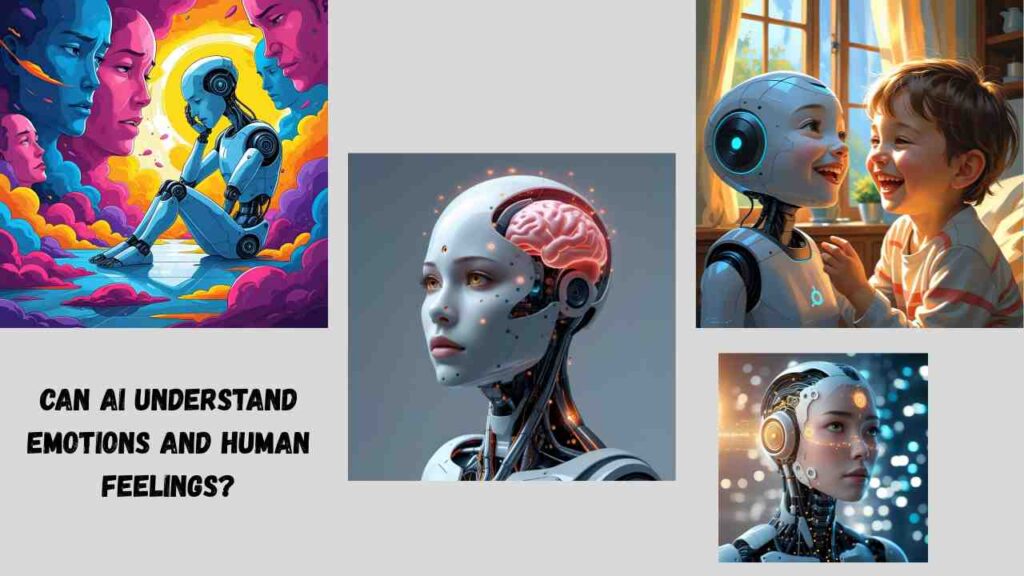
Introduction
AI is becoming smarter every day… But can it ever become emotional?
Can machines truly understand what we feel, or is it just clever programming?
In this article on MeriKahani…online, we explore the concept of Emotional AI (also called Affective Computing)—how it works, what it can do, and why it still has limitations compared to real human emotion…
🧠 What Is Emotional AI?
Emotional AI refers to systems designed to detect, interpret, and sometimes respond to human emotions… It uses data like:
- Facial expressions
- Voice tone
- Body language
- Text sentiment (like happy or angry words)
🎯 Goal: Make AI respond in a way that feels “human-like,” especially in customer service, healthcare, and education…
📲 Real-Life Examples of Emotional AI in 2025
| Use Case | Emotional AI Feature |
| Customer Service | AI bots detect angry customers via tone |
| E-Learning Apps | Facial recognition tracks boredom/confusion |
| Mental Health Apps | Voice mood detection + coping suggestions |
| HR Interviews | AI analyzes candidate’s facial expressions |
| Cars & Mobility | AI detects driver fatigue/emotion |
🚗 Example: Some new electric vehicles in India now come with AI dashboards that read driver moods and suggest music or safety breaks…
😐 Can AI Actually “Feel”?
No… AI does not experience emotions—it only simulates understanding them…
How It Works:
- AI detects emotional cues from input (voice, image, or text)…
- It matches them with pre-labeled emotional data (like happy, angry, sad)…
- It then responds in a way that seems empathetic or appropriate…
🧠 Reminder: AI does not feel joy, sadness, or empathy… It imitates patterns…
⚠️ The Limitations of Emotional AI
- Cultural Differences
A smile in one country may mean politeness; in another, discomfort… - Surface-Level Detection
AI reads expressions, but can’t understand context, trauma, or personal history… - Privacy Issues
Emotional AI collects sensitive data—like your facial expressions or voice—raising ethical concerns… - Manipulation Risk
Marketers or apps could use emotional data to influence behavior unfairly…
🧘 Ethical Concerns with Emotional AI
| Concern | Why It Matters |
| Privacy | Emotions are deeply personal |
| Consent | Are users aware their feelings are being read? |
| Bias | AI may misread emotions based on race or gender |
| Overtrust | People may trust AI too much in emotional roles |
💡 Example: A mental health chatbot may offer advice, but it can’t replace a qualified human therapist…
🇮🇳 Emotional AI in the Indian Context
In India, emotional AI is being explored in:
- Education: Online classes adjust difficulty based on student frustration
- Banking: AI detects customer anger in call centers
- Retail: Smart cameras monitor customer mood in stores
🎓 But: Indian emotions are expressed through many languages, dialects, and cultural expressions—making accurate detection more complex…
🔗 Internal Linking Suggestions:
- Is AI Becoming Too Human? The Debate
- Ethical AI: Why Fairness Matters in India
- AI in Indian Schools: A Smart Revolution
📌 Conclusion
AI is getting better at reading emotions—but it still cannot feel them like a human… Emotional AI can be helpful, especially in education, healthcare, and safety—but we must use it ethically, with clear boundaries and transparency…